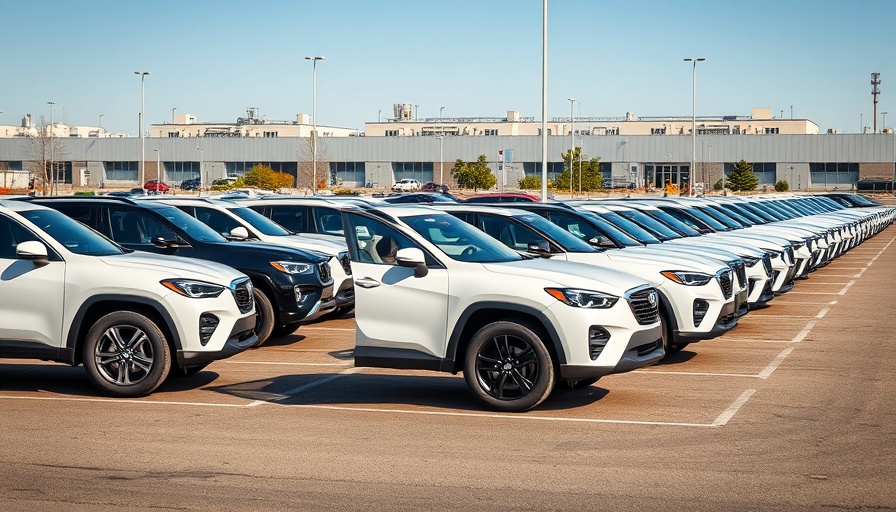
Asbury Auto's Declining F&I Revenues: What It Means for Dealers
In the second quarter of 2025, Asbury Automotive Group reported a 5.4% decline in its finance and insurance (F&I) revenue, a significant drop that has caught the attention of car dealership owners and industry observers alike. With the ever-evolving landscape of auto finance, understanding the factors behind this downturn is crucial for dealerships aiming to stay competitive.
Understanding the Factors Behind the F&I Decline
Several factors contribute to the dip in F&I revenue, and as dealership principles, understanding these can allow for strategic adjustments. One significant aspect is the reduction in used-vehicle inventory observed at Asbury and other dealerships. In a market where demand remains high but supply is constrained, revenue opportunities dwindle. Dealerships offering financing packages often rely on a variety of vehicle options to drive F&I success; fewer vehicles mean fewer chances to sell finance deals.
Current Market Conditions and Their Impact
The automotive industry is facing a paradigm shift due to rising interest rates and ongoing supply chain issues. As interest rates for auto loans rise, potential buyers may hesitate to make vehicle purchases, impacting overall sales and F&I revenues. Current trends indicate that financing deals may become less attractive to consumers, with rising costs deterring buyers from engaging in financing options.
Comparative Insights from Competitors
In contrast to Asbury's decline, Camping World recently reported record F&I revenues of $201 million. This stark difference underscores the competitive landscape; while some dealerships thrive amid challenges, others struggle. Successful dealerships may employ innovative approaches, such as optimizing their online sales platforms or improving customer engagement in finance discussions.
Strategies to Combat F&I Revenue Declines
For dealership owners and managers facing similar issues, it’s vital to adopt proactive strategies. Consider focusing on digital sales techniques, enhancing customer experiences, or expanding financing options. Additionally, evaluating tools for automotive body repair and local auto body shop partnerships may also create new revenue streams. Leveraging local car body shops for collaborative promotions could lead to increased foot traffic and ancillary service sales, thereby supporting F&I revenues.
Preparing for Future Trends in Auto Financing
Looking ahead, dealerships must prepare for evolving trends in used car financing and customer preferences. Offering more flexible payment options, reduced credit card fees for transactions, and clear communication about auto loan rates will be critical. Also, monitoring consumer feedback can help dealerships adapt their financing packages to better suit customer needs. Understanding how to effectively market new and used cars while managing inventory will be essential for driving future sales.
Conclusion: Taking Action for a Stronger Future
The automotive landscape is shifting, and as the F&I revenues of major players like Asbury indicate, dealers must remain agile to survive. By focusing on strategic improvements, increasing flexibility in financing, and active community engagement, dealerships can not only navigate this challenging environment but potentially thrive in it. Embrace change, monitor industry trends closely, and don't hesitate to innovate. Move forward with confidence in understanding your financing landscape, and print out quotes online for car body repair and finance options to provide your customers the most value.
 Add Row
Add Row  Add
Add 




Write A Comment